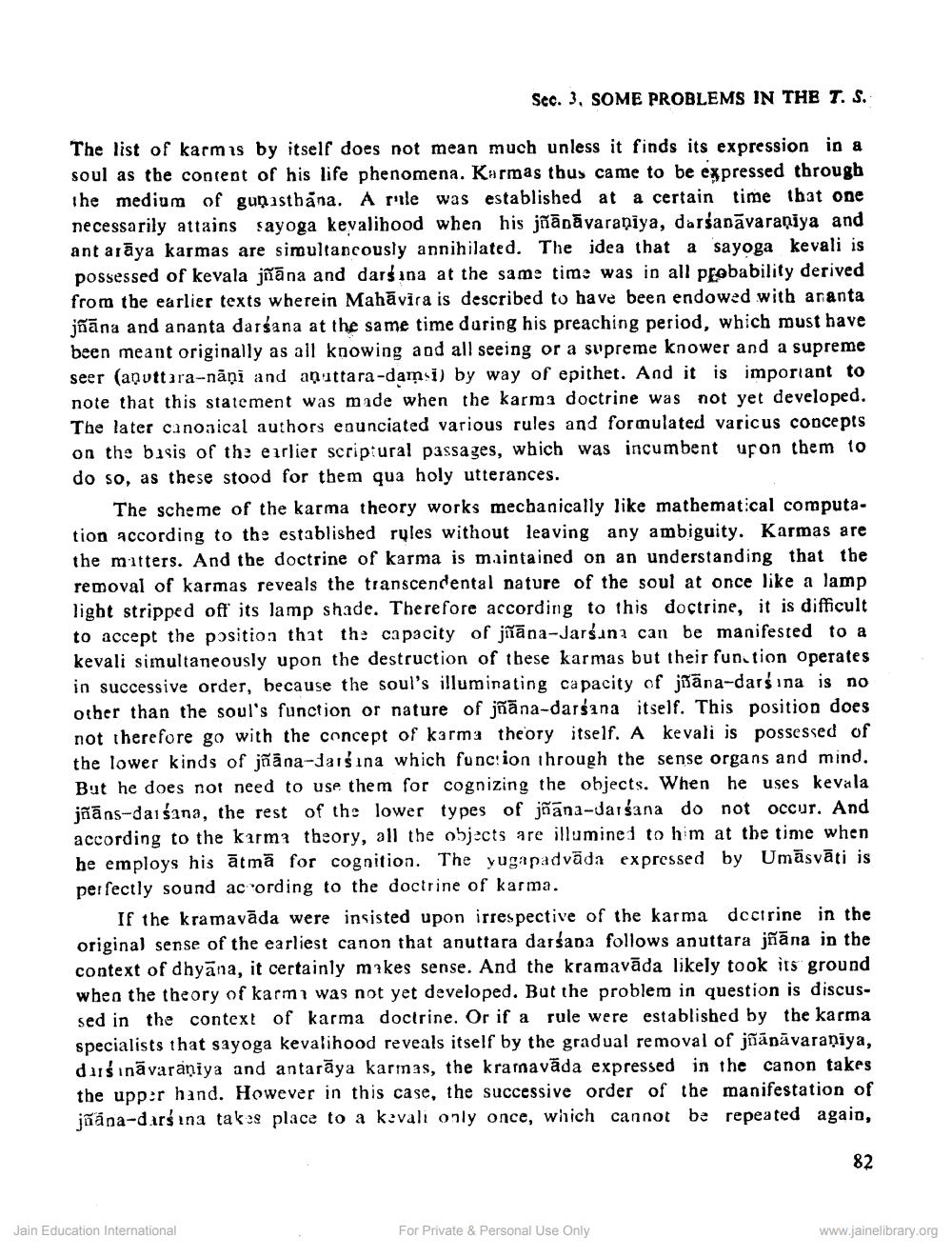________________
Sec. 3, SOME PROBLEMS IN THE T. S.
The list of karm is by itself does not mean much unless it finds its expression in a soul as the content of his life phenomena. Karmas tbus came to be expressed through The medium of guņisthāna. A riile was established at a certain time that one necessarily attains sayoga keyalihood when his jñānā varaniya, darśanāvaraniya and ant arāya karmas are simultaneously annihilated. The idea that a sayoga kevali is possessed of kevala jñāna and darsina at the same time was in all probability derived from the earlier texts wherein Mahāvira is described to have been endowed with aranta jñāna and ananta darśana at the same time during his preaching period, which must have been meant originally as all knowing and all seeing or a supreme knower and a supreme seer (anuttara-nāņi and anuttara-dam-i) by way of epithet. And it is important to note that this statement was made when the karma doctrine was not yet developed. The later canonical authors enunciated various rules and formulated varicus concepts on the basis of the earlier scriptural passages, which was incumbent upon them to do so, as these stood for them qua holy utterances.
The scheme of the karma theory works mechanically like mathematical computation according to the established rules without leaving any ambiguity. Karmas are the matters. And the doctrine of karma is maintained on an understanding that the removal of karmas reveals the transcendental nature of the soul at once like a lamp light stripped off its lamp shade. Therefore according to this doctrine, it is difficult to accept the position that the capacity of jñāna-Jarśana can be manifested to a kevali simultaneously upon the destruction of these karmas but their function Operates in successive order, because the soul's illuminating capacity of jñāna-darsina is no other than the soul's function or nature of jñāna-darśana itself. This position does not therefore go with the concept of karma theory itself. A kevali is possessed of the lower kinds of jñāna-dars ina which funcion through the sense organs and mind. But he does not need to use them for cognizing the objects. When he uses kevala jñāns-darśana, the rest of the lower types of jñāna-darśana do not occur. And according to the karma theory, all the objects are illumine i to him at the time when he employs his ātmā for cognition. The yugapadvāda expressed by Umāsvāti is perfectly sound according to the doctrine of karma.
If the kramavāda were insisted upon irrespective of the karma doctrine in the original sense of the earliest canon that anuttara darśana follows anuttara jñāna in the context of dhyāna, it certainly makes sense. And the kramavāda likely took its ground when the theory of karmi was not yet developed. But the problem in question is discussed in the context of karma doctrine. Or if a rule were established by the karma specialists that sayoga kevalihood reveals itself by the gradual removal of jñānāvaraniya, duršināvaraniya and antarāya karmas, the kramavāda expressed in the canon takes the upper hand. However in this case, the successive order of the manifestation of jõāna-darsina takes place to a kzvali only once, which cannot be repeated again,
Jain Education International
For Private & Personal Use Only
www.jainelibrary.org




